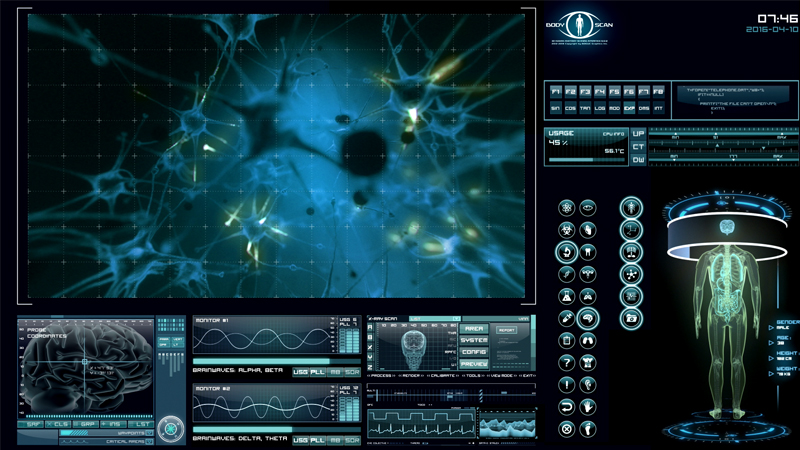Overview
What Is EHR?
An electronic health record (EHR) is the systematized collection of patient and population electronically-stored health information in a digital format. These records can be shared across different health care settings. Records are shared through network-connected, enterprise-wide information systems or other information networks and exchanges. Source: Wikipedia.
What Is Sylex Health?
Sylex Health platform is a IHE standards compliant comprehensive national or regional level EHR management solution, which is designed to capture
and store data on the state of a patient across time from all national healthcare providers into a single repository, which can be used for quick access by authorized and authenticated users. National level implementation of Sylex Health enables seamless data collection, aggregation and cross sharing for the benefit of patients, healthcare providers and national policy makers.
How Does EHR Benefit the Entire Healthcare Community?
Leveraging an EHR Across National Continuum Of Care Allows for Increased Effectiveness By:
- Better integration among providers by improved information sharing,
- Viewable and up-to-date medication and allergy lists,
- Standardization of data, order sets, and care plans helping to implement common treatment of patients using evidence-based medicine,
- Access to experts for rural healthcare providers by sharing best practices and allowing for specialized care through telemedicine,
- More convenient, faster, and simpler disease management.
- EHR systems may decrease the fragmentation of care by improving care coordination. EHRs have the potential to integrate and organize patient health information and facilitate its instant distribution among all authorized providers involved in a patient's care. For example, EHR alerts can be used to notify providers when a patient has been in the hospital, allowing them to proactively follow up with the patient.
- Making transitions between care settings simple with all relevant information readily available for recipient care provider.
- EHRs can aid in diagnosis. With EHRs, providers can have reliable access to a patient's complete health information. This comprehensive picture can help providers diagnose patients' problems sooner.
- Sylex EHRs can help providers quickly and systematically identify and correct operational problems. In a paper-based setting, identifying such problems is much more difficult, and correcting them can take years.
- Using EHRs improves Documentation and Coding
EHRs Improve Risk Management By:
- Providing clinical alerts and reminders
- Improving aggregation, analysis, and transmission of patient information
- Making it easier to consider all aspects of a patient's condition
- Supporting diagnostic and therapeutic decision-making
- Gathering all relevant information (lab results, imaging, etc.) in one place
- Enabling evidence-based decisions at a point of care
- Providing built-in safeguards against prescribing treatments that would result in adverse events
- Availability of full patient information which reduces medical errors and avoids duplication of tests.
- Better availability of information can also reduce the chance that one specialist will not know about an unrelated (but relevant) condition being managed by another specialist.
- EHRs can immediately expose potential safety problems when they occur, helping providers avoid more serious consequences for patients and leading to better patient outcomes.
- Information gathered by a primary care provider and recorded in an EHR informs a clinician in the emergency department about a patient's life-threatening allergy, and emergency staff can adjust care appropriately, even if the patient is unconscious.
EHRs May Help Providers Prevent Liability Actions By:
- Demonstrating adherence to the best evidence-based practices
- Producing complete, legible records readily available for the defense (reconstructing what actually happened during the point of care)
- Disclosing evidence that suggests informed consent
EHRs Help Patients Save Time and Money By:
- Lab test results are stored in EHR, which can be accessed by multiple care providers, hence helping to prevent double testing and avoiding unnecessary radiation, expenses and wasted time.
- Diagnostic and therapeutic errors causing waste of precious time and expenses are reduced significantly.
EHRs Help National Regulators Streamline Healthcare Reforms and Implement Focused Development Strategies By:
- Accessing country or regional level aggregated statistical reports, disease trends
- Testing policy effectiveness and efficiency in a very short period of time
- Implementing national level healthcare standards (such as state approved clinical practice guidelines) and quality measures
- Identifying educational needs and boosting healthcare educational institutions
- Direct investments towards most needed areas of healthcare
- Increasing national healthcare rating globally, hence attracting more investments
- Bridging healthcare providers, academic researchers, regulators, technology developers and patients within a well-organized synergistic continuum.
References:
- Jamoom, E., Patel, V., King, J., & Furukawa, M. (2012, August). National perceptions of ehr adoption: Barriers, impacts, and federal policies. National conference on health statistics.
- BCouch, James B. "CCHIT certified electronic health records may reduce malpractice risk," Physician Insurer. 2008.
- Duffy L, et. al. "Effects of electronic prescribing on the clinical practice of a family medicine residency"Web Site Disclaimers, Fam Med. 2010;42(5):358-63
- Lisa Kern et al., "Electronic Health Records and Ambulatory Quality of Care," Journal of General Internal Medicine, Oct. 3, 2012
- Bell, B, Thornton, K. (2011). From promise to reality achieving the value of an EHR. Healthcare Financial Management, 65(2), 51-56.
- Holt J, Warsy A, Wright P. "Medical decision making: guide to improved CPT coding"Web Site Disclaimers, Southern Medical Journal. 103(4):316-22, 2010 Apr. AHRQ Publication No: 09-0095 dated September 2009.
Features
Demographics
Data such as date of birth, sex, race, ethnicity, preferred language are captured. Maintaining this data is essential for clinical assessment purposes and provides an opportunity to look at statistics in terms of these demographic groups (i.e. age, sex, race, etc.).
Vital signs
Data such as height, weight, blood pressure, body mass index, and growth charts are captured. They provide essential, baseline data for treatment decisions and historical trends. This historical information allows for recognition of acute or chronic changes that may prove significant.
Problem list
Problem lists facilitate continuity of patient care by providing a comprehensive and accessible list of patient problems in one place. Problem lists used within health records are a list of illnesses, injuries, and other factors that affect the health of an individual patient, usually identifying the time of occurrence or identification and resolution. Those serve as an important communication vehicle used throughout the entire healthcare continuum.
Adopting existing national standards is critical to achieving complete, consistent, and quality data, as well as working toward the future of healthcare data exchange. Currently, there is no single standard for the structure or content of problem lists. However, there are existing standards that address problem list content, with some variation between them (such as The Joint Commission, ASTM International, HL7, Meaningful Use Program, etc.).
We rigorously follow current developments and continuously update the system to get aligned with the most up-to-date set of standards.
Medication list
Objective is to maintain active medication list, which is a list of medications that a given patient is currently taking.
Medication allergy list
Objective is to maintain active medication allergy list.
Maintaining a list of known medication allergies for a patient is essential for safe patient care. Keeping this information stored in an EHR allows for easy review when prescribing new medications to a patient.
Patient’s care history
This includes information about previous visits to healthcare providers, care plans, including goals and instructions, procedures, care team members and other ambulatory and inpatient specific data.
Family health history
Family health history is recorded as a structured data.
Capturing family health history can improve efficiencies by minimizing the collection of information across settings. The collection of this information can be used to establish clinical decision support interventions for screening and prevention of chronic conditions based upon patient risk indicators, contributing to reduced costs and improved population health.
Laboratory information system (e-Labs)
Clinical laboratory test results are incorporated into EHR as structured data via HL7 protocols.
Incomplete or misplaced test results make efficient, safe, and effective clinical decision-making difficult. Having lab and test results in the patient’s record allows for ease of access and reference when and where it is needed. The availability of structured lab results within the EHR contributes to office efficiencies while also assisting providers in the ability to make real time decisions about the patient’s care.
Picture Archiving and Communication System (PACS)
PACS, or picture archiving and communication system, is a medical imaging technology used for storing, retrieving, presenting and sharing images produced by various medical hardware modalities, such as X-ray, CT scan, MRI and ultrasound machines.
The availability of diagnostic imaging results, along with accompanying information in the EHR allows providers ease of access when needed during a patient encounter. It also provides an increased ability to share information with patients and assists in improving efficiencies, as access to this information assists in avoiding repeat tests and reducing radiation exposure to patients.
e-Prescribing
Electronic prescribing allows generation and transition of permissible prescriptions electronically.
e-Prescribing is a fast, efficient paperless way to write/re-order and transmit prescriptions. It has pre-set fields so all the required information for prescriptions are entered and automatically stored in the patient’s record for easy review during follow-up visits or for transitions to other providers. E-Prescribing increases overall patient satisfaction because the prescriptions can be automatically transmitted to a pharmacy of preference. The system also supports guided dose algorithms to assist providers. Providers also have the opportunity to query a formulary to ensure the drug selected is covered by the patient’s health plan to assist in reducing costs to the patient.
Sylex Health enables maintenance of the latest lists of nationally approved drugs and medications, so that prescriptions may only be issued from the list approved by the regulating authority.
Vaccination reporting and automatic alerting system
The Sylex platform enables submission of electronic data to national vaccination registries or vaccination information systems except where prohibited, and in accordance with applicable law and practice.
Submitting data to vaccination registries makes information easily available for other providers and institutions as appropriate. When done throughout the community, it gives providers and colleagues historical vaccination data for queries meant to help keep patient vaccinations up to date. This ultimately contributes to the improvement of public health by reducing vaccine-preventable diseases and over-vaccination.
Sylex Health platform enables setting up of vaccination plans for diverse population groups and allows automatic generation of notification alerts to relevant members of target groups and assigned healthcare providers.
Transitions of care (e-Referral)
e-Referral feature enables seamless movement of a patient from one setting of care (hospital, ambulatory primary care practice, ambulatory specialty care practice, long-term care, home health, rehabilitation facility) to another.
Authentication, access control, and authorization
Data privacy and security requirements are taken seriously by Sylex team. We appreciate how sensitive these data are for each individual, and therefore Sylex Med has built a robust security system beyond the minimum requirements set by major regulators, which ensures that only authorized parties pass verification and are granted access to EHRs.
Emergency access
The system enables granting access to an identified set of users during an emergency. The rules can be localized according to the laws and regulations of each jurisdiction.
References:
- Integrating the Healthcare Enterprise https://www.ihe.net/
- Health Level Seven International http://www.hl7.org/
- HealthIT https://www.healthit.gov
- TechTarget http://searchhealthit.techtarget.com
- AHIMA. Pocket Glossary of Health Information Management and Technology, Third Edition. Chicago, IL: AHIMA, 2011. http://library.ahima.org
- Wikipedia https://www.wikipedia.org/




